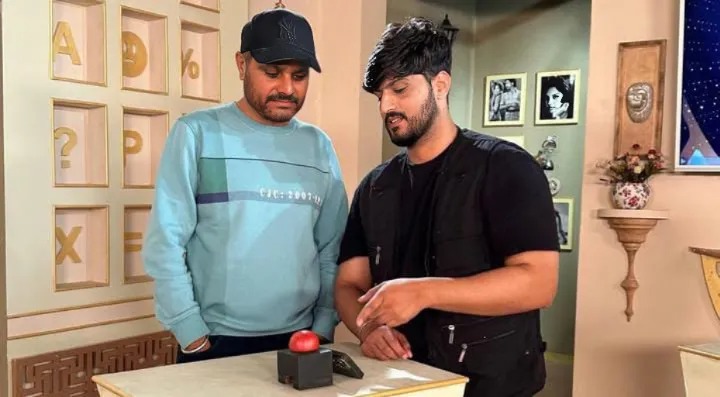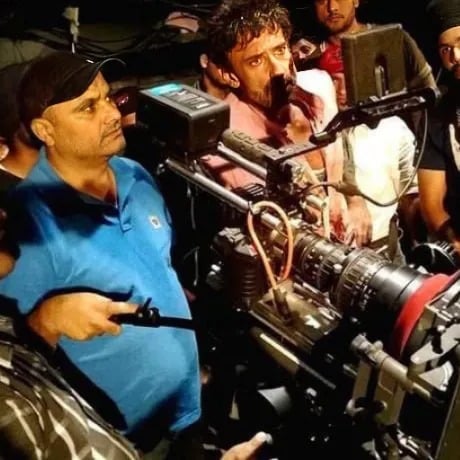Gurnam Singh Director of Photography
Lights, Lens, Action: Gurnam Singh’s Rise as a Cinematic Visionary




P:S - Gurnam Singh With Gurnam Bhullar
P:S - Gurnam Singh on Set
In the ever-evolving landscape of Indian cinema, where technology and storytelling intersect, one name is quietly but powerfully redefining how stories are seen: Gurnam Singh. A name that may not yet ring loudly in mainstream headlines, but within the film industry, it resonates with a deep respect. As a Director of Photography (DOP), Gurnam has been the visual mastermind behind a diverse range of films such as Bibi Rajni, Yashoda, Dulla The Robinhood (2025), Middle Class Melodies, and Khatre Da Ghuggu.
Singh’s work is not flashy for the sake of flair—it’s purposeful, emotional, and immersive. His ability to shift gears across languages, genres, and moods is what makes him one of the most promising cinematographers working in Indian cinema today.
A Cinematographer with the Eye of a Poet
Gurnam Singh’s journey into the world of visual storytelling began in the heartland of Punjab, where storytelling is woven into everyday life. While other children drew cartoons, Gurnam was fascinated with shadows on the wall, light filtering through tree branches, and the beauty of everyday faces. This early obsession grew into a full-blown passion for film and photography, eventually leading him to pursue formal education in cinematography.
“I don’t just shoot what’s in front of me,” Singh once said. “I shoot what it means.”
This philosophy has driven every frame he composes.
Bibi Rajni: Empowerment Through the Lens
One of Singh’s earliest breakthroughs came with the Punjabi drama Bibi Rajni, a powerful narrative centered on a woman’s resilience against patriarchal constraints. Rather than dramatizing the story with excessive visual effects, Gurnam let the imagery breathe. Wide-angle rural landscapes, slow pans across weathered faces, and soft natural light made Bibi Rajni feel honest, grounded, and intimate.
Each shot felt like a silent tribute to every unsung woman in rural India. Singh’s lens didn’t just document Rajni’s life—it elevated her journey. Critics praised the film’s cinematography for its emotional subtlety and visual poetry, placing Singh on the radar of directors looking for substance over spectacle.
Thrill and Precision in Yashoda
Gurnam Singh’s entry into the Telugu film industry came with the high-octane thriller Yashoda, starring Samantha Ruth Prabhu. This film was the polar opposite of Bibi Rajni in tone and pace, but Singh adapted with seamless precision.
Yashoda demanded slick, high-contrast visuals to match its suspense-driven plot. Gurnam used tight, claustrophobic framing for the tense hospital scenes and expansive drone shots for action sequences, crafting a visual language that kept audiences on edge. The transitions between soft, emotional moments and intense, fast-paced sequences highlighted Singh’s ability to control tone through lighting and camera movement.
His work was particularly noted for complementing Samantha’s powerful performance without ever overshadowing it—a hallmark of a cinematographer who understands his role as a visual partner, not a show-stealer.
Dulla The Robinhood (2025): A Visual Spectacle in the Making
In what is being touted as one of Punjabi cinema’s most anticipated releases, Dulla The Robinhood (2025) is shaping up to be a milestone in regional filmmaking. At the center of its grand visual appeal is Gurnam Singh, who has embraced the opportunity to build a visual world that merges folklore with modern action drama.
Set against the backdrop of injustice and rebellion, Dulla The Robinhood features vast fields, intense horse chases, and cinematic showdowns that require both technical mastery and creative imagination. Singh has reportedly used a combination of anamorphic lenses, slow-motion rigs, and dramatic lighting setups to bring Dulla’s world alive.
The film also utilizes earthy color grading, giving the visuals a rustic yet epic quality. Singh’s focus on visual symbolism—such as contrasts between light and darkness, and color-coded emotions—is expected to give Dulla a timeless feel. If early footage is any indication, this could be Gurnam’s most visually impactful project yet.
Middle Class Melodies: Simplicity That Resonates
Switching genres once again, Gurnam Singh brought his grounded sensibility to Middle Class Melodies, a Telugu slice-of-life drama set in a small town. The story, revolving around a man’s modest dreams of opening a hotel, required a touch of reality—and Singh delivered just that.
There are no high-speed chases or lavish song sequences here. Instead, there’s a slow dance of sunlight through window grilles, steam rising from chai cups, and evenings lit by fairy lights and motorbike headlights. The visual language was tender, personal, and evocative.
Singh avoided exaggerated lighting and focused instead on ambient, available sources to preserve authenticity. The result was a film that felt more like a memory than a motion picture—a quality that resonated deeply with viewers.
Khatre Da Ghuggu: Comedy in Color
On the other end of the spectrum lies Khatre Da Ghuggu, a light-hearted Punjabi comedy where Gurnam Singh unleashed a completely different side of his talent. Known for his flair for emotional narratives, Singh proved he could match comedic timing with visual rhythm.
Colorful sets, fast dolly shots, jump cuts, and exaggerated lighting turned ordinary village scenes into comedic gold. He played with visual exaggeration just enough to amplify humor while keeping it within realistic bounds. The film’s vibrant color grading reflected the energy of its characters and narrative.
Importantly, Singh’s camera always knew where the punchline was. Whether it was a sudden zoom-in on a shocked face or a cleverly framed reaction shot, the cinematography added its own layer of wit to the story.
A Name to Watch in Indian Cinematography
Gurnam Singh is part of a new generation of Indian cinematographers who are redefining what it means to shoot a film. He’s not confined by region, language, or genre. From social dramas to thrillers, folklore-inspired action sagas to relatable comedies, Singh has demonstrated an uncanny ability to adapt, innovate, and deliver.
What makes him unique is not just his technical command—though that is formidable—but his emotional intelligence. He understands that every story has its own soul, and his job is to find the visual form of that soul.
As film industries across India move toward content-driven cinema with global appeal, the role of cinematographers like Gurnam Singh becomes even more crucial. His rising reputation is not just based on his film credits, but on his dedication to storytelling that feels real, resonant, and visually unforgettable.
Final Frame: The Road Ahead
Gurnam Singh is currently in talks for several cross-industry collaborations, including web series, bilingual films, and indie features. With streaming platforms expanding content diversity, his expertise is in growing demand.
From the golden mustard fields of Punjab to high-tech sets in Hyderabad, Gurnam Singh has proven that his camera can find beauty, drama, and truth anywhere. And if his journey so far is any indication, the best is yet to come.
As Indian audiences become more discerning and global in taste, the industry needs cinematographers who can match that vision. With his lens firmly fixed on excellence, Gurnam Singh is clearly one of them.